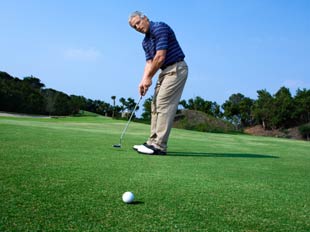 You know the feeling... when the gray days fade and the first glimpses of spring appear, there’s a tangible excitement called spring fever.
You know the feeling... when the gray days fade and the first glimpses of spring appear, there’s a tangible excitement called spring fever.If your exercise routine was confined to the living room or gym during winter, now is the perfect time to step up your physical activity and get outdoors:
Walking and running. Simple and effective, walking is a good exercise choice for almost everyone. If you prefer a little speed, try running. You can also walk and run in intervals.
Biking. Most neighborhoods have biking trails just waiting to be explored.
Joining team sports. Softball, baseball, and beach volleyball teams are starting to form this time of year. Be sure to practice and improve your skills while you’re waiting for the season to start.
Playing golf. It’s time to dust off the clubs — just be sure to walk the links so you get the most out of this activity.
A daily dose of sunshine can do wonders for your mood (not to mention health — sunshine is your best source of vitamin D). Be sure to wear sun protection when exercising outdoors, even when the weather is cool. And while you’re stepping out to enjoy the weather, do some spring cleaning with your workout habits.
 You may wonder how great basketball players keep healthy and fit. Practice and talent are obviously large parts of their success, but it’s also important to eat for high performance. Just like an elite athlete, healthy eating helps you perform at your peak in the gym and at work.
You may wonder how great basketball players keep healthy and fit. Practice and talent are obviously large parts of their success, but it’s also important to eat for high performance. Just like an elite athlete, healthy eating helps you perform at your peak in the gym and at work. When you read about a super-slim celebrity and her latest diet plan, you’re bound to hear something about detox. But what exactly is detox and does it really work?
When you read about a super-slim celebrity and her latest diet plan, you’re bound to hear something about detox. But what exactly is detox and does it really work? Walking boosts physical health, but it also sharpens mental edge. Studies find that after 15 minutes of exercise, participants hone several brain functions: problem-solving, decision-making, concentration, and reaction times. A University of Kansas study found that fit patients with early Alzheimer’s had 4 times less cellular death than their sedentary counterparts. And walking stimulates chemicals to help naturally sooth tension triggers that cause anxiety and depression.
Walking boosts physical health, but it also sharpens mental edge. Studies find that after 15 minutes of exercise, participants hone several brain functions: problem-solving, decision-making, concentration, and reaction times. A University of Kansas study found that fit patients with early Alzheimer’s had 4 times less cellular death than their sedentary counterparts. And walking stimulates chemicals to help naturally sooth tension triggers that cause anxiety and depression.

